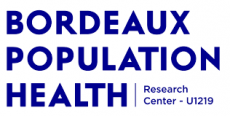Incidence and Predictors of Tuberculosis-associated IRIS in People With HIV Treated for Tuberculosis: Findings From Reflate TB2 Randomized Trial
Résumé
BACKGROUND: After antiretroviral therapy (ART) initiation, people with HIV (PWH) treated for tuberculosis (TB) may develop TB-associated immune reconstitution inflammatory syndrome (TB-IRIS). Integrase inhibitors, by providing a faster HIV-RNA decline than efavirenz, might increase the risk for this complication. We sought to assess incidence and determinants of TB-IRIS in PWH with TB on raltegravir- or efavirenz-based ART. METHODS: We conducted a secondary analysis of the Reflate TB 2 trial, which randomized ART-naive PWH on standard TB treatment, to receive raltegravir- or efavirenz-based ART. The primary objective was to evaluate the incidence of TB-IRIS. Incidence rate ratio comparing TB-IRIS incidence in each arm was calculated. Kaplan-Meier curves were used to compare TB-IRIS-free survival probabilities by ART arm. Cox regression models were fitted to analyze baseline characteristics associated with TB-IRIS. RESULTS: Of 460 trial participants, 453 from Brazil, Côte d'Ivoire, Mozambique, and Vietnam were included in this analysis. Baseline characteristics were median age 35 years (interquartile range [IQR], 29-43), 40% female, 69% pulmonary TB only, median CD4, 102 (IQR, 38-239) cells/mm³, and median HIV RNA, 5.5 (IQR, 5.0-5.8) log copies/mL. Forty-eight participants developed TB-IRIS (incidence rate, 24.7/100 PY), 19 cases in the raltegravir arm and 29 in the efavirenz arm (incidence rate ratio 0.62, 95% confidence interval .35-1.10). Factors associated with TB-IRIS were: CD4 ≤ 100 cells/μL, HIV RNA ≥500 000 copies/mL, and extrapulmonary/disseminated TB. CONCLUSIONS: We did not demonstrate that raltegravir-based ART increased the incidence of TB-IRIS compared with efavirenz-based ART. Low CD4 counts, high HIV RNA, and extrapulmonary/disseminated TB at ART initiation were associated with TB-IRIS.
Origine : Fichiers éditeurs autorisés sur une archive ouverte



